Understanding Audio Cables: A Beginner's Guide - Part 2
We explore the intricacies of audio cables like Lemo and Hirose, to reveal that while these cables offer robust metal heads and secure locking mechanisms, they're not immune to the wear and tear of the production environment. We also highlight the need for quality over convenience. In the real world of audio production, where equipment reliability is king, we suggest investing in high-quality cables from reputable manufacturers or even DIY solutions to avoid the pitfalls of cheap, unreliable alternatives like those found on overnight delivery services.
TIPSESSENTIALS
Glen Ackers
1/10/20255 min read
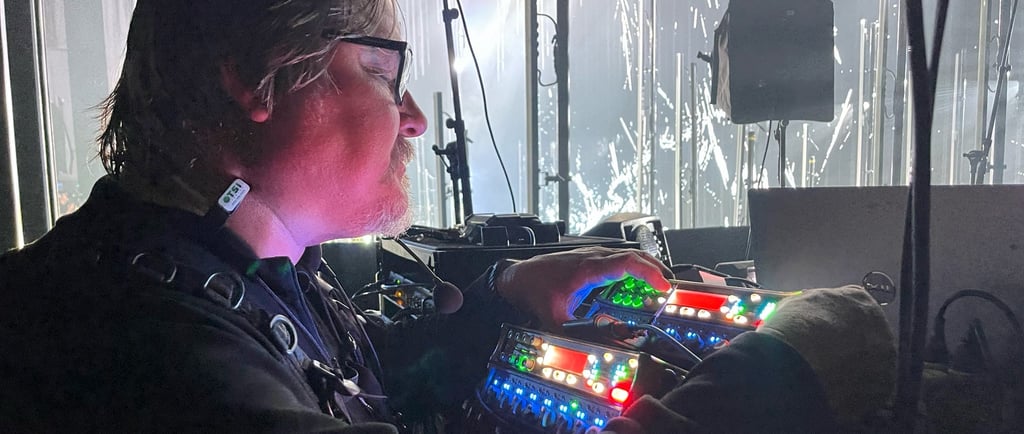

In part one of this guide, we covered two of the most commonly used connectors in production audio: the XLR and TA series of connectors. They have for many years been the most prominent audio cables in use, and for the foreseeable future will continue to be common staples in our production audio world. One good reason for that is both cables can also carry digital signals in addition to the analog signals they have been used for all these years thereby providing some form of futureproofing to their design.
From XLR and TA cables, simply step down another size (or two) into 2 different cables that are similar to one another and are just smaller versions of the XLRs and TAs. Really all cables are the same, they just have different connections. I’m talking about Lemo and Hirose cables. From a wiring perspective they are the same, only the Hirose has a special sort of exco-locking mechanism, where the lemo simply locks into its socket. Pictured above you see the 4-Pin Hirose alongside a 4-pin XLR. The right hand photo has a TA4 with a 2-Pin Lemo. One big difference is the head size. Where XLR, TA connectors don’t have different head sizes, Lemo connectors do. There’s also a mini-Lemo cable, but the number of pins can be the same as the larger head giving the small cable the same capabilities as the larger headed cables. It's extremely important to understand that all these connectors are not necessarily compatible with each other.
Mini-lemo connectors roughly ½ the size of their big brother Lemo cables. They are rarely used, in our experience, but they are out there. The Arri Mini used a 6-pin mini-Lemo for the audio input signals. It’s successor, The Arri Mini LF changed that input to the full size 5-pin Lemo. The most common for mini-Lemos will be 2-pin power cables for external monitors and other modular camera parts. The Arri Mini audio input breakout cable is pictured below with a XLR input. The 3 pin XLR can carry one path of analog audio or 2 AES channels. The cable can also be built with 2 XLR analog input cables.
The Lemo and Hirose connectors are smaller than a TA connector, but share the benefit of metal heads like the XLR. The heads make them incredibly durable and easy to use. Both connectors have an interlocking system, but aren’t made to daisy chain together like the XLR. Lemo connectors are similar to the TA connectors in that they will commonly be wired to the same gender on both sides of the cable. Where the TA is dual female, Lemo cables feature dual male heads...because why not? The two cameras where this becomes a notable problem is the original Red One camera from 2007, and more recently the Black Magic 6K cameras. It's nothing a custom cable can't resolve, but worth noting nonetheless.
The picture above is a Hirose to 2-pin Lemo power cable for a Teradek video transmitter. You can see why we're talking about both of these connectors at the same time; their heads are roughly the same size, about ⅔ that of a TA connector, but unlike the plastic head of the TA they are metal for a more robust design that suits professional use more than plastic. The Hirose, on the left, has an outer locking mechanism that clamps over teeth on the receiving end to make a rock-solid connection, where the Lemo slides inside the receiver end and clicks into place. Both connectors are solid but the Hirose is more robust. The structure of the conduit is the same, 1 positive (hot), 2 neutral, and 1 ground wire. The picture above lacks a neutral wire and is a more traditional DC connection with one hot cable and one ground. Again, we won’t be diving into too much science here so you can compare this to jump-starting a car where you connect one hot cable and one ground.
As was mentioned in Part 1, the 4 pin XLR is being phased out of common usage, and from what we've seen on many newer devices, the 4-pin Hirose is one of the connectors slowly replacing them. The interlocking mechanism is strong and the head is metal like it’s predecessor the XLR. Many new BDS (Battery Distribution System) boxes like AudioRoot, Deity SPD-1, and newer versions of the Remote Audio BDSv5 SMART use Hirose connection for outputs (optional) instead of the old standard 12V interlocking cables sound mixers have used for decades on older PSC and Remote Audio BDS systems. New 8 Series Mixers from Sound Devices also utilize Hirose connections for power output, too. Both the SL-2 and Nexus Go expansion kits use Hirose power taps out that allow users to eliminate the BDS boxes in bags, and provide reliable power solutions. The TA4 connector does remain popular as a reliable power input option.
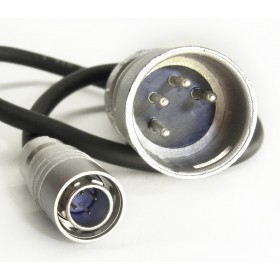

This seems like a good spot for a side note on quality and cables. We are rough on gear, both in the field and in packing gear for transit. Reliability is key. We have used Alvin’s Cables which are found on Amazon and can be delivered overnight. I’ve absolutely used them on set but don’t expect them to hold up over time. The most common problem I’ve had is soft heads that get deformed and wont fit. Realistically, you should order ahead and get a solid cable that will last the span of a career. Hell, we’ve got 5 Sound Devices cables that were purchased 20 years ago that we still keep in my kit because of their reliability. When you have the time, do it right and pay for quality. Cable makers like our buddies at Sound Hard in New Orleans or very good friends at Gotham Sound are amazing, and over the years I’ve had quite a few from Remote Audio as well. The alternative is make your own, which is time well spent, and lots of money well saved.
Lemo connectors are very common in multiple configurations for transporting everything from power, to audio and video signals. A Hirose connection is the same as a Lemo, but the head locks. The lemo is a robust locking head with multiple capabilities that varies with the number of pins in the head, the cables are much smaller than XLRs and more durable than TA3s. Like the TA head, the number of pins and receivers inside the head typically determines what we use the cable for.
Both 4-pin and 2-pin cable are almost always power cables (that applies to nearly all cables) where cables with 6-pin, and now 9-pin male Lemos are commonly used as timecode cables. These timecode cables are bi-directional were half the pins go in one direction, and the other half do the reverse. Which end delivers the out, or in is determined by a switch on the device, or in the digital menus. The 9-pin is capable carrying additional data as well, but so far that’s doesn’t pertain to audio. Red Camera’s last 2 releases (Komodo and V-Raptor) are the only cameras we're aware of with a 9-pin Lemo connector, which allows for a lot of data.
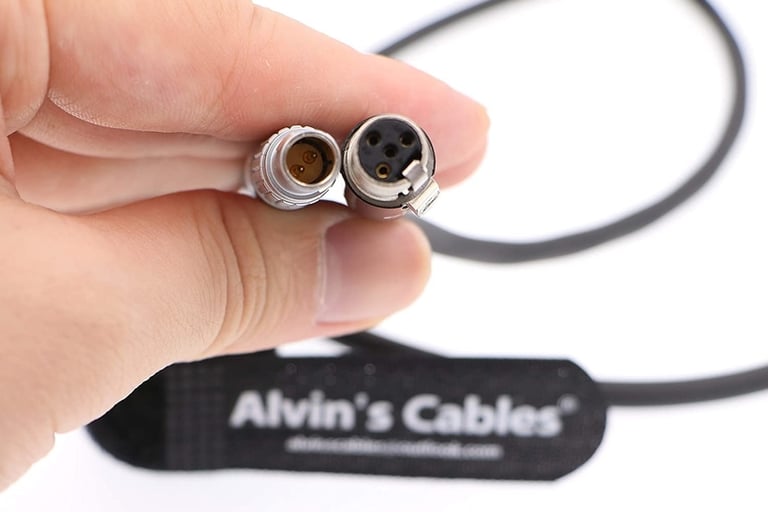

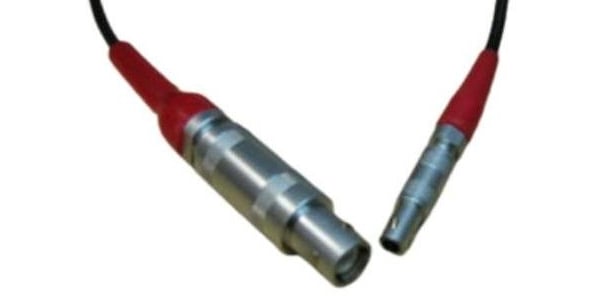

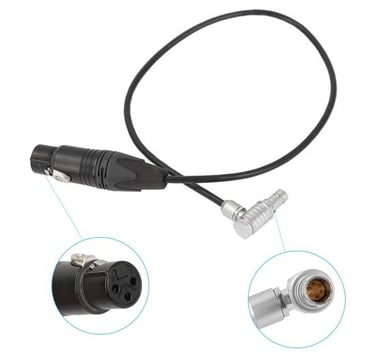

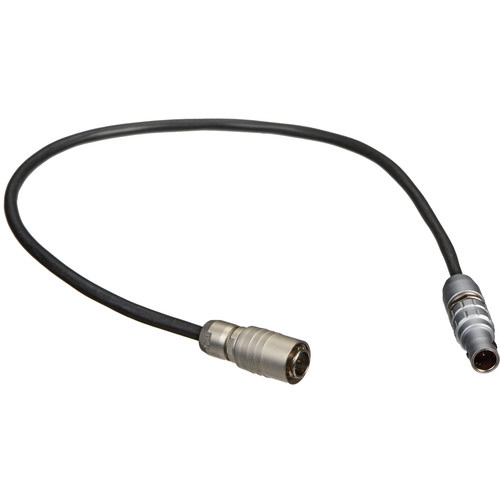

Get in touch
© 2025 Vandelay Sound Exports, Inc. • RETURN Policy • Privacy Policy • Terms and Conditions
